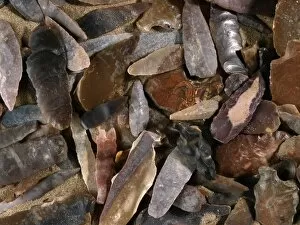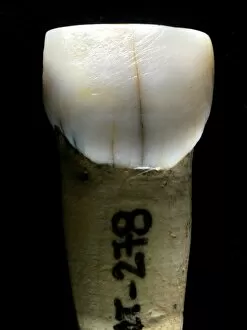Stone Tools Collection
"Unearthing the Secrets of Stone Tools: A Glimpse into Prehistoric Ingenuity" Delving deep into the annals of history
All Professionally Made to Order for Quick Shipping
"Unearthing the Secrets of Stone Tools: A Glimpse into Prehistoric Ingenuity" Delving deep into the annals of history, we discover a fascinating world where our ancestors relied on stone tools for survival. These Neolithic flint arrowheads C014 / 1034 and their companions, such as Neolithic flint arrowheads C014 / 1032 and Stone-age flint fragments C014 / 1020, offer us invaluable insights into the resourcefulness of early humans. Crafted with meticulous precision, these Neolithic flint arrowheads C014 / 1030 are testament to the ingenuity that flourished during this era. Each stroke etched onto these ancient artifacts tells a story of hunting prowess and communal cooperation. The delicate craftsmanship exhibited by Neolithic flint arrowhead C014 / 1023 and its counterparts like Neolithic flint arrowhead C014 / 1022 and Neolithic flint arrowhead C014 / 1025 is awe-inspiring. These prehistoric treasures, known as Prehistoric Flint Tools C014/1014, transport us back in time when our ancestors skillfully shaped nature's gifts to fashion tools essential for their daily lives. With each strike against rock or bone, they harnessed primitive technology to overcome challenges presented by an unforgiving environment. As we examine these remarkable relics further, it becomes evident that these they were not mere instruments but extensions of human creativity and adaptability. They enabled our forebears to secure sustenance from nature's bounty while also serving as symbols of cultural identity. The significance attached to these objects is undeniable; hence why they have endured through millennia until reaching us today. Their presence allows us a glimpse into a distant past filled with perseverance and resilience. So let us marvel at the legacy left behind by those who came before us – those who wielded these exceptional creations with purposeful intent.




































